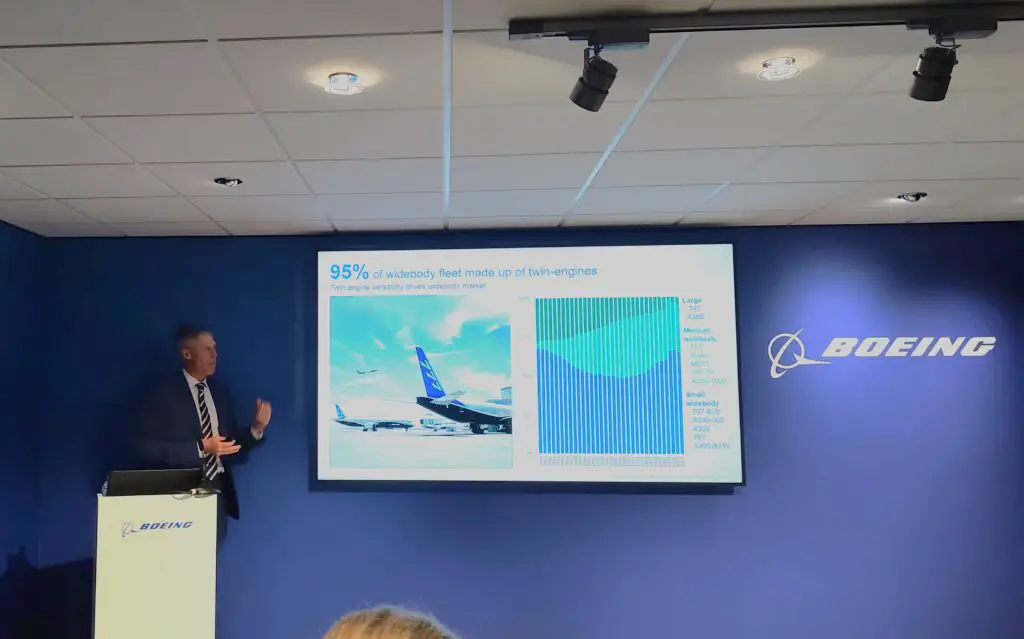PARIS (Envoy) – The Paris Air Show has officially kicked off. As it gradually picks up pace, decisions from manufacturers such as Boeing help us understand that this event marks the first return to the «old normal» in the aviation industry.
Boeing presented its Commercial Market Outlook highlighting significant points. Among them, the gap left by the gradual retirement of the 757 from fleets won’t be filled by any new design in the short term.
«We believe that the 737 MAX 7 and the 787-8 can cover the two extremes of the segment,» said Darren Hulst, Vice President of Commercial Marketing at Boeing. «In the short term, we don’t see a need to address that demand with a new model.»
Additionally, Hulst explained the forecast downturn in the regional aviation segment. He mentioned that the pilot shortage has prompted many to leave the segment to operate larger, more cost-effective aircraft. Operators also drive a trend towards operating larger aircraft, emphasizing cost-effectiveness per seat.
«Ultimately, the regional segment will be reduced to subsidized and public interest routes,» said Hulst. He mentioned this in reference to programs like the U.S. EAS (Essential Air Services) or similar.
Another key point was Boeing’s perception of the low or negligible impact of the post-pandemic scenario on market forecasts over the next 20 years. «Post-pandemic aviation industry impact is no longer a factor. We have returned to the growth trends we had in 2019.»
Boeing estimates that over the next 20 years, the industry will require more than 42,000 aircraft. They predict that 40% of this demand will be driven by low-cost airlines. For Latin America, it is expected to account for 5% of the total new aircraft to be incorporated.
Furthermore, Boeing anticipates that the commercial aviation market will expand beyond just the number of aircraft. This will be through the sole implementation of improvements in technology and productivity. «Without the pressure to improve these parameters, we would need 8,000 more aircraft,» added Hulst.














